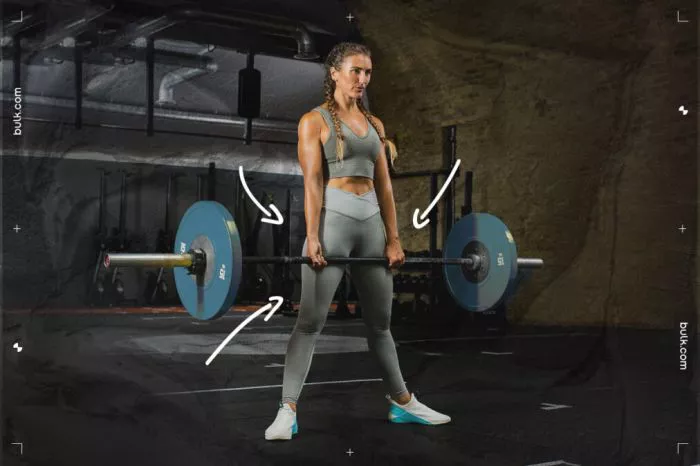Losing weight can be challenging under the best of circumstances. But what if you want to shed those extra pounds and exercising causes you pain? Whether it’s due to an injury, chronic condition, or muscle soreness, there are still ways to reach your weight loss goals. This article explores effective strategies for losing weight when physical activity is painful or difficult.
Understanding the Pain
Before diving into solutions, it’s important to understand why exercise might hurt. Pain during exercise can result from:
- Injury: A specific injury like a sprain or strain.
- Chronic Conditions: Conditions such as arthritis or fibromyalgia.
- Muscle Soreness: Delayed Onset Muscle Soreness (DOMS) from new or intense workouts.
- Overuse: Repeated stress on the body from too much exercise.
If you experience severe or persistent pain, consulting a healthcare professional is crucial. They can provide a proper diagnosis and recommend appropriate treatments.
Focus on Nutrition
When exercise is limited due to pain, nutrition becomes even more critical for weight loss. Here are some dietary strategies to help you lose weight:
1. Eat Balanced Meals
A balanced diet includes a mix of:
- Lean Proteins: Chicken, turkey, fish, tofu, beans.
- Healthy Fats: Avocado, nuts, olive oil.
- Complex Carbohydrates: Whole grains, vegetables, fruits.
These foods provide essential nutrients and help control hunger.
2. Control Portion Sizes
Monitoring portion sizes helps manage calorie intake. Using smaller plates, measuring portions, and being mindful of serving sizes can prevent overeating.
3. Increase Fiber Intake
Fiber aids digestion and helps you feel full longer. Incorporate foods high in fiber such as:
- Vegetables: Broccoli, carrots, spinach.
- Fruits: Apples, pears, berries.
- Legumes: Lentils, chickpeas, black beans.
4. Stay Hydrated
Drinking plenty of water can support weight loss. Water helps in digestion, reduces hunger, and can sometimes be mistaken for hunger.
5. Limit Processed Foods
Reduce intake of processed foods high in sugar and unhealthy fats. Opt for whole, unprocessed foods to promote overall health.
Incorporate Gentle Activities
Even if intense exercise is painful, gentle activities can still support weight loss and improve fitness.
1. Walking
Walking is a low-impact exercise that can be done at your own pace. Start with short distances and gradually increase as your body allows.
2. Swimming
Swimming is gentle on the joints and provides a full-body workout. It’s ideal for those with joint pain or arthritis.
3. Cycling
Cycling, whether on a stationary bike or a regular bike, offers a low-impact cardiovascular workout.
4. Yoga
Yoga improves flexibility and can be adapted to suit your comfort level. Look for classes designed for beginners or those with special needs.
5. Stretching
Regular stretching can improve flexibility and reduce muscle tension. Gentle stretching routines can be incorporated into your daily routine.
Use Technology and Tools
Several tools and technologies can help manage pain and support weight loss efforts.
1. Fitness Trackers
Fitness trackers can help monitor activity levels and provide motivation without pushing through pain. They can also track your progress over time.
2. Pain Relief Devices
Devices like heating pads, ice packs, and TENS units can alleviate pain and reduce inflammation.
3. Apps for Gentle Exercises
There are numerous apps offering low-impact workouts and stretching routines tailored for those with pain or limitations.
See Also: What Is The Number One Exercise To Lose Weight
Prioritize Rest and Recovery
Rest is essential for weight loss and overall health, especially when exercise is painful.
1. Get Adequate Sleep
Aim for 7-9 hours of quality sleep each night. Good sleep supports recovery and helps regulate metabolism.
2. Incorporate Rest Days
Allow time for your body to recover between activities. Overworking can exacerbate pain and lead to injury.
3. Manage Stress
High stress levels can affect your ability to lose weight. Practice relaxation techniques such as meditation, deep breathing, or spending time in nature.
Seek Professional Guidance
Working with professionals can help tailor your weight loss plan to your specific needs.
1. Nutritionists
A nutritionist can create a personalized eating plan based on your health conditions and weight loss goals.
2. Physical Therapists
Physical therapists can design exercise routines that accommodate your pain and help with recovery.
3. Personal Trainers
A personal trainer experienced with clients who have physical limitations can provide guidance on safe and effective exercises.
Address Emotional Well-Being
Emotional factors can play a significant role in weight management.
1. Seek Support
Join support groups or seek counseling if you find emotional eating or stress to be obstacles in your weight loss journey.
2. Set Realistic Goals
Set achievable goals to stay motivated and avoid frustration. Celebrate small successes along the way.
3. Focus on Overall Health
Remember that weight loss is just one aspect of health. Prioritize overall well-being and make adjustments as needed.
Conclusion
Losing weight when exercise is painful requires a multifaceted approach. By focusing on nutrition, incorporating gentle activities, using helpful tools, and prioritizing rest and professional guidance, you can work towards your weight loss goals while managing discomfort. Listen to your body, make gradual changes, and remember that every small step counts. Your health journey is unique, and finding what works best for you is key to long-term success.


